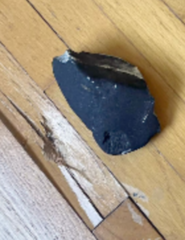If you’re a new investor, understanding the basic principles of rental real estate can help kickstart a successful investing career.
By Dave Spooner

If you’re thinking about investing in the rental housing market, you may be wondering how to get started. Like many new investors, you probably have an optimistic vision for your new investment property: reliable tenants, passive income and eventual financial freedom. But how do you get there from where you are now? Like everything else, you start with the basics. Understanding even the rudimentary principles of rental real estate can help you kickstart a successful investing career.
This includes knowledge of property types, return on investment, mortgages and the legal steps to acquire a property. The research you do up front may help you avoid a misstep that could sink your investment. Here’s how to get started with rental real estate investing:
Deciding between a residential and commercial property
Before you buy a property, you need to decide whether you’re looking to purchase residential or commercial property. Both types can help you reach your end goal of passive income. However, they have some important distinctions.
Residential real estate: is property you rent to someone looking for living space or a principal home. Your tenant(s) could be a family, a student, a young professional or someone else. Residential properties typically have lower starting costs. Residential mortgages are also easier to obtain, as banks tend to accept lower credit scores than they would for commercial loans. There’s also higher demand for residential properties, so you’ll have an easier time filling your units.
Commercial real estate: is property you rent to a business. The business could use the property for retail, office or industrial purposes. Commercial properties require commercial mortgages, which are slightly more complex than their residential counterparts. In some states, buildings with more than five units are automatically classified as commercial properties for tax purposes. Ask a mortgage officer in your state to learn whether this rule or a similar one applies.
Assessing property value
Now that you’ve selected a property type, you need some options. Maybe you’ve chosen a neighborhood or a few properties you’re considering. How do you know which one is your best move financially? Here are two crucial factors to consider when assessing property value.
School districts: Position within a top school district influences value more than you may think. In fact, school districts are one of the biggest determining factors in renter and buyer demand, and in turn, return on investment. Good school districts attract young families who are willing to look past downsides and pay more for high-quality education for their children.
Following the 1% rule
Qualitative factors are one way to measure return on investment, but you should also have the numbers to back up your assessment. Will the property generate consistent rental income? Or will the property ultimately require more time and money than it can return to you? Fortunately, there’s a rule of thumb for assessing the strength of an investment that you can apply before you make it.
The 1% rule holds that if you can reasonably rent a property out at a rate equal to one percent of the starting mortgage, it’s likely to be profitable. You should know whether the rate you’ve calculated is reasonable based on demand and the rates of similar properties in the area.
Let’s say you buy a duplex for $310,000. You make a 25% down payment, equal to $77,500. That leaves you with a $232,500 mortgage. One percent of this remaining mortgage is $2,325, which halved is $1,162.5. If you can rent both units of the duplex for around $1160, the property is likely a good investment.
The 1% rule is a quick trick for evaluating the potential of an investment. However, it should not be taken as a definitive verdict. The soundness of any investment depends on many factors, including your current cash flow, the property’s condition, property tax rates, locational trends and other factors. The 1% rule will get you in the ballpark, but do your due diligence.
Financing your property
Finally, you’ve chosen a property. If you’re like most investors, you’ll need to borrow money to purchase it. This means finding a mortgage lender, negotiating terms and making a down payment. Let’s break down mortgage types, down payments and interest rates:
Mortgage types: There are many different types of mortgages. The two most common are fixed-rate and adjustable-rate mortgages. Fixed-rate mortgages have a fixed interest rate throughout the loan’s duration, while adjustable-rate mortgages have an initial fixed rate that changes as the loan ages.
Down payments and interest rates: In addition to choosing a mortgage type and duration (15 years, 30 years, etc.), you’ll also need to make a sizable down payment. Larger down payments will help you secure lower interest rates because your lender assumes less risk. Conversely, smaller down payments are accompanied by higher interest rates. Down payments of around 20% are usually considered sufficient.
Legal checklist
As the buyer, it’s your job to get ahead of a purchase before any problems arise. Here’s what you should do to ensure your investment is properly protected before you make it official:
Verify property title documents: A property title, conveyed in a physical deed, confirms ownership of a property. Before signing a purchase agreement, view the latest deed on file and check that the seller is the current owner. This can be done through a title company or attorney. Next, check for any liens on the property. Liens are claims on a property placed by a lender when the owner still owes money. The property cannot be transferred if there are any active liens on it. Finally, the title documents need to be signed by the seller and buyer (you) to formally transfer ownership.
Buy title insurance: Title insurance protects you should something unsavory, like an undetected lien, be discovered after you transfer the title. Some lenders require it to obtain a mortgage. Title insurance is typically around $1,000.
Confirm property tax receipts: Next, confirm that the previous owner paid all necessary property taxes. Ask the seller for receipts directly, or request them from your local government’s tax office.
Perform an inspection: Hire a professional home or building inspector to see if there are any issues you should know about before buying the property.
Sign the property purchase agreement: A property purchase agreement is a contract between you and the seller. Like any other contract, it covers the price and any negotiated conditions of the purchase. Your agent will provide the agreement. Communicate with them about any issues or conditions you would like to be included.
Every successful investor started exactly where you are now. The research and dedication you devote up front can help you achieve financial freedom, too. You’re now prepared to buy your first property and get started in real estate investing.
Source credit: https://www.entrepreneur.com/starting-a-business/the-beginners-guide-to-investing-in-rental-properties/435390

















![Money Transfer Services operating in Ghana [Remittance Guide] Money Transfer Services operating in Ghana [Remittance Guide]](https://ghanaonline.net/wp-content/uploads/2023/10/omid-armin-8Nppe0yLmn8-unsplash-600x337.jpg)


















